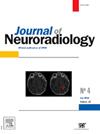Recent advances in sMRI and artificial intelligence for presurgical planning in focal cortical dysplasia: A systematic review
IF 3.3
3区 医学
Q2 CLINICAL NEUROLOGY
引用次数: 0
Abstract
Background
Focal Cortical Dysplasia (FCD) is a leading cause of drug-resistant epilepsy, particularly in children and young adults, necessitating precise presurgical planning. Traditional structural MRI often fails to detect subtle FCD lesions, especially in MRI-negative cases. Recent advancements in Artificial Intelligence (AI), particularly Machine Learning (ML) and Deep Learning (DL), have the potential to enhance FCD detection's sensitivity and specificity.
Methods
This systematic review, following PRISMA guidelines, searched PubMed, Embase, Scopus, Web of Science, and Science Direct for articles published from 2020 onwards, using keywords related to “Focal Cortical Dysplasia,” “MRI,” and “Artificial Intelligence/Machine Learning/Deep Learning.” Included were original studies employing AI and structural MRI (sMRI) for FCD detection in humans, reporting quantitative performance metrics, and published in English. Data extraction was performed independently by two reviewers, with discrepancies resolved by a third.
Results
The included studies demonstrated that AI significantly improved FCD detection, achieving sensitivity up to 97.1 % and specificities up to 84.3 % across various MRI sequences, including MPRAGE, MP2RAGE, and FLAIR. AI models, particularly deep learning models, matched or surpassed human radiologist performance, with combined AI-human expertise reaching up to 87 % detection rates. Among 88 full-text articles reviewed, 27 met inclusion criteria. The studies emphasized the importance of advanced MRI sequences and multimodal MRI for enhanced detection, though model performance varied with FCD type and training datasets.
Conclusion
Recent advances in sMRI and AI, especially deep learning, offer substantial potential to improve FCD detection, leading to better presurgical planning and patient outcomes in drug-resistant epilepsy. These methods enable faster, more accurate, and automated FCD detection, potentially enhancing surgical decision-making. Further clinical validation and optimization of AI algorithms across diverse datasets are essential for broader clinical translation.
sMRI和人工智能在局灶性皮质发育不良术前计划中的最新进展:系统综述。
背景:局灶性皮质发育不良(FCD)是导致耐药癫痫的主要原因,特别是在儿童和年轻人中,需要精确的术前计划。传统的结构MRI往往不能检测到细微的FCD病变,特别是在MRI阴性的病例中。人工智能(AI)的最新进展,特别是机器学习(ML)和深度学习(DL),有可能提高FCD检测的灵敏度和特异性。方法:本系统综述遵循PRISMA指南,检索PubMed、Embase、Scopus、Web of Science和Science Direct,检索2020年以后发表的文章,使用与“局灶性皮质发育不良”、“MRI”和“人工智能/机器学习/深度学习”相关的关键词。纳入了使用人工智能和结构MRI (sMRI)检测人类FCD的原始研究,报告了定量绩效指标,并以英文发表。数据提取由两位审稿人独立完成,差异由第三位审稿人解决。结果:纳入的研究表明,人工智能显著改善了FCD检测,在各种MRI序列中,包括MPRAGE、MP2RAGE和FLAIR,灵敏度高达97.1%,特异性高达84.3%。人工智能模型,特别是深度学习模型,匹配或超过了人类放射科医生的表现,人工智能和人类专业知识的结合达到了87%的检测率。在88篇全文文章中,27篇符合纳入标准。这些研究强调了先进的MRI序列和多模态MRI对增强检测的重要性,尽管模型性能因FCD类型和训练数据集而异。结论:sMRI和人工智能的最新进展,特别是深度学习,为改善FCD检测提供了巨大的潜力,从而改善了耐药癫痫的术前计划和患者预后。这些方法能够更快、更准确、更自动化地检测FCD,潜在地提高手术决策。进一步的临床验证和优化不同数据集的人工智能算法对于更广泛的临床翻译至关重要。
本文章由计算机程序翻译,如有差异,请以英文原文为准。
求助全文
约1分钟内获得全文
求助全文
来源期刊

Journal of Neuroradiology
医学-核医学
CiteScore
6.10
自引率
5.70%
发文量
142
审稿时长
6-12 weeks
期刊介绍:
The Journal of Neuroradiology is a peer-reviewed journal, publishing worldwide clinical and basic research in the field of diagnostic and Interventional neuroradiology, translational and molecular neuroimaging, and artificial intelligence in neuroradiology.
The Journal of Neuroradiology considers for publication articles, reviews, technical notes and letters to the editors (correspondence section), provided that the methodology and scientific content are of high quality, and that the results will have substantial clinical impact and/or physiological importance.
 求助内容:
求助内容: 应助结果提醒方式:
应助结果提醒方式:


